News 6/16/17
Top News

Rumors related to Apple’s healthcare takeover abound, with CNBC reporting that the company is working behind the scenes to develop an Iphone-based repository of health data that users can share from at will. Lab results and allergy lists seem to be first on Apple’s pick list of data points to tackle. Tied in with that is the recommendation of a Citigroup analyst that Apple buy up Athenahealth in a move that would give it access to the EHR vendor’s 83 million patient records and its Epocrates physician end users and technology. Apple is certainly a force to be reckoned with when it comes the ubiquity of its mobile devices (though some have lately challenged that notion), but it seems the issue of interoperability with other competing platforms – as seen so often with healthcare – would raise its ugly head sooner rather than later. It would be fun to see how Apple fanboys would take to Jonathan Bush’s cult of personality.
Reader Comments
From First Fruits: “Re: App Orchard. Prices have gone up by $5,000 for the top two tiers effective May 25th from what I can tell. And they have taken away benefits, i.e. the number of included support hours, free app listings, and registrations to events. You don’t get any indication of available APIs until after you pay your annual fee. Does anyone consider this a pay-to-play interoperability?”
From Chip Hart: “Re: Larry Weed, MD. Larry passed away at the age of 93 earlier this month. Arguably the great-grandfather of EHRs, and certainly of the organized medical record. (He invented the SOAPM and POMR concepts.) His lectures are famous. I believe you’ve linked to them in the past. The stuff from the 70s is still relevant today. Here’s one.”
HIStalk Announcements and Requests
This week on HIStalk Practice: The FBI looks into Zoom’s falsified risk-adjustment payments. Community Health and Wellness Center of Greater Torrington leans on Stone Health Innovations for CCM expertise. Several cancer care practices select Flatiron Health software and support. Digital Noema Telehealth adds EazyScripts e-prescribing to virtual consult software. The Medical Society of the State of New York expands partnership with DrFirst. Spry Health raises $5.5 million. Dermatologist Stacia Poole, MD discusses the role health IT plays at a practice with older patients. Thanks for reading.
Webinars
June 22 (Thursday) 1:00 ET. “Social Determinants of Health.” Sponsored by Philips Wellcentive. Presenter: David Nash, MD, MBA, dean, Jefferson College of Population Health. One of the nation’s foremost experts on social determinants of health will explain the importance of these factors and how to make the best use of them.
June 29 (Thursday) 2:00 ET. “Be the First to See New Data on Why Patients Switch Healthcare Providers.” Sponsored by Solutionreach. As patients pay more for their care and have access to more data about cost and quality, their expectations for healthcare are changing. And as their expectations change, they are more likely to switch providers to get them met. In this free webinar, we’ll look at this new data on why patients switch and what makes them stay. Be one of the first to see the latest data on why patients leave and what you can do about it.
July 11 (Tuesday) 1:00 ET. “Your Data Migration Questions Answered: Ask the Expert Q&A Panel.” Sponsored by Galen Healthcare Solutions. Presenters: Julia Snapp, manager of professional services, Galen Healthcare Solutions; Tyler Suacci, principal technical consultant, Galen Healthcare Solutions. This webcast will give attendees who are considering or in the process of replacing and/or transitioning EHRs the ability to ask questions of our experts. Our moderators have extensive experience in data migration efforts, having supported over 250+ projects, and migration of 40MM+ patient records and 7K+ providers. They will be available to answer questions surrounding changes in workflows, items to consider when migrating data, knowing what to migrate vs. archive, etc.
Previous webinars are on our YouTube channel. Contact Lorre for information on webinar services.
Acquisitions, Funding, Business, and Stock

Omada Health raises $50 million in a round led by Cigna, which will offer the company’s digital chronic disease management technology to its members.
Cleveland Clinic and Oscar Health will offer co-branded insurance plans to people in northeastern Ohio. The move is a first for both organizations, marking Oscar’s entry into the state and the health system’s first time offering an insurance product bearing its name.

Weirton Medical Center (WV) sues Cerner and its Siemens subsidiary for their failure to provide adequate support and service related to a $30 million contract extension for Soarian in 2013. A trial by jury has been requested. WMC’s end goal appears to be termination of its contract with Cerner, and Cerner’s free-of-charge assistance in switching the hospital to a new vendor.
PokitDok acquires the software and pharmacy assets of Oration, a prescription management and savings app developer. PokitDok plans to make Oration’s commercial pharmacy benefit data available through its DokChain network.
Announcements and Implementations

JD McCarty Center for Children with Developmental Disabilities (OK) implements Evident’s Thrive EHR. The center enlisted the consulting services of TruBridge to assist with the roll out. Evident and TruBridge are both subsidiaries of CPSI.
Technology
Physician’s Computer Company adds FDB’s MedsTracker e-prescribing tool to its EHR for pediatricians.
MModal’s CAPD tools now support Epic’s NoteReader CDI module.
Salesforce adds new communications features to its Health Cloud CRM, enabling caregivers outside of the doctor’s office to communicate via mobile device, and to share care plans across different organizations.
Sales

Community Medical Centers (CA) will implement LogicStream Health’s Clinical Process Improvement solutions.

Neighbors Emergency Center selects Presidiohealth’s FSEC Foundation software, which combines T-System’s EDIS with Presidio’s PM technology.
People

Clinical Computer Systems, developer of the Obix Perinatal Data System, promotes Cindy Bell to VP of customer services.

Cambia Grove founder and executive director Nicole Bell will join Amazon Web Services as principal business development manager, serving as a healthcare industry liaison.

Erin Jospe, MD (PatientKeeper) joins Kyruus as CMO.

Citing closer proximity to family, Vancouver Island Health Authority President Brendan Carr, MD plans to step down to take over as president and CEO of the William Osler Health System in Ontario. His five-year tenure at Island Health has included oversight of the rocky rollout of the IHealth EHR, which still has physicians up in arms over its risk to patient safety. “I’ve learned immensely from that experience,” he explains, “sometimes painfully so. It’s been a challenging thing, and I think it’s something that will absolutely allow this organization to do great things in the future.”
Privacy and Security

Microsoft releases a bevy of security updates to protect users from WannaCry-like attacks. In addition to automatic updates, the company is making the updates available for manual download and installation for unsupported software versions including Windows XP and Windows Server 2003.
Sensato Cybersecurity Solutions will focus on the attacker’s perspective during its Hacking Healthcare Workshop, set to take place September 13-14 in Asbury Park, NJ.
Government and Politics

A GAO report finds that pharmacists at the VA have trouble accessing patient data via its pharmacy system, and often run into trouble when transferring or refilling prescriptions from non-VA facilities. Recommendations include updating the system and taking a deeper look at barriers to interoperability.
Innovation and Research

Colorado’s UCHealth launches the virtual Applied Decision Science Lab through its CARE Innovation Center to collaborate with entrepreneurs on healthcare technology. Researchers are particularly interested in using AI and machine learning to enhance EHR workflows and clinical decision support.
Other

Bloomberg reports that nearly half of the $2 billion raised on popular crowdfunding platforms like GoFundMe are being used to pay medical expenses. Facebook has gotten in on the action, adding a health category to a new feature that lets users set up fundraisers for personal causes.

A US District judge sentences Wilbert Veasey, Jr. to pay over $23 million to CMS and serve 17 years in prison for his part in what authorities call the biggest home health fraud in the history of Medicare and Medicaid. Veasey, along with four conspirators, convinced already vulnerable Medicare patients to sign up for unnecessary home health services, after which they then filed for reimbursements for via a number of shell companies. The racket ultimately ran up $374 million in fraudulent claims.

The Michigan Attorney General charges HHS Director Nick Lyon and Chief Medical Executive Eden Wells in the latest round of criminal charges related to the Flint water crisis in 2014 and 2015 that resulted in 12 deaths and dozens more sickened by contaminated drinking water. Lyon’s actions were particularly reprehensible. According to court documents, he “willfully disregarded the deadly nature of the Legionnaires’ disease outbreak, later saying he ‘can’t save everyone,’ and ‘everyone has to die of something.’”
Sponsor Updates
- Meditech releases a new podcast, “Home Care & Population Health.”
- Liaison Technologies will host an IT Leaders Forum on data strategy June 21 in London.
- Meditech will host the 2017 Revenue Cycle Summit June 20-21 in Foxborough, MA.
- Navicure will exhibit at the Florida MGMA 2017 Annual Conference June 21-22 in Orlando.
- Experian Health publishes a new case study featuring Yale New Haven Health.
- Health Catalyst adds Duncan Gallagher (Allina Health) to its Board of Directors.
- The Medical Society of the State of New York will offer its members complimentary access to DrFirst’s e-prescribing and medication management app.
- InterSystems customers Northwell Health and Mount Sinai Health System connect their private HIEs to the New York-based Healthix public HIE.
- ROI Healthcare Solutions will present at Inforum 2017 July 10-12 in New York City.
Blog Posts
- Is “Cloud Slice” the Next “VM” for Hands-on Learning? (Learn on Demand Systems)
- Planning for Collaboration: CMS Emergency Preparedness (LiveProcess)
- Easy as Pie: Most Effective Training Techniques for Learning New Technology (Navicure)
- Interoperability: It’s Time to Get in the Game (Netsmart)
- You Can Book Flights Online – Why Not Medical Appointments (Experian Health)
- Patient Payments and Patient Experience: A Chicken & Egg Scenario (Patientco)
- Brexit Follow-up (Reaction Data)
- Managing the surprisingly troublesome impact of real-time healthcare on decision-making (PerfectServe)
- Testing, it’s not just for IT anymore (Optimum Healthcare IT)
- Healthcare IT’s Relatively Brief and Exciting History (Spok)
- 6 essential tips for adding on Epic’s home care applications (Nordic)
- Interoperability Bubble (ClinicalArchitecture)
Contacts
Mr. H, Lorre, Jenn, Dr. Jayne, Lt. Dan.
More news: HIStalk Practice, HIStalk Connect.
Get HIStalk updates. Send news or rumors.
Contact us.
















































































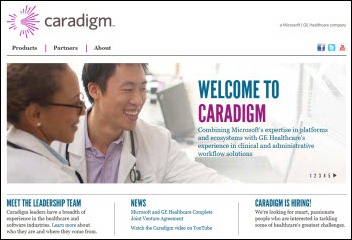










































![image5[1] image5[1]](http://histalk2.com/wp-content/uploads/2017/05/image51.png)















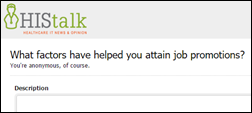




















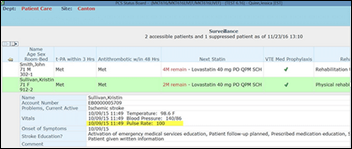

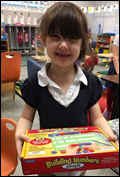














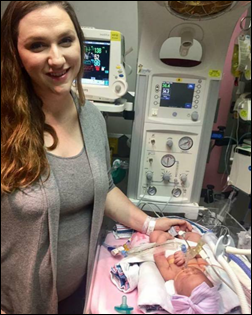










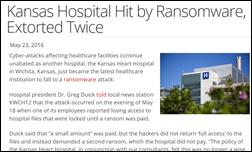



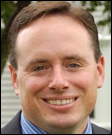





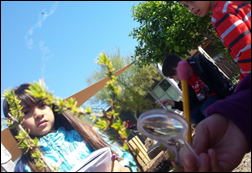


















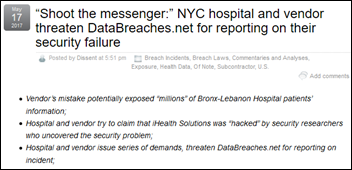






















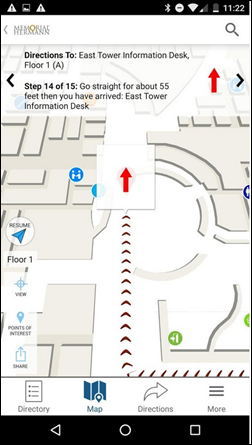







The $50 billion Rural Health payout is welcome. In context, it's less than the total cost of the F22 raptor…